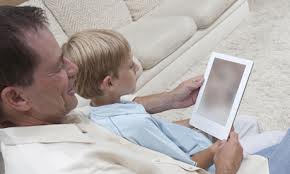Last month, in September of 2012, I had the amazing honor of getting to host an internationally famous author, Sharon Draper, during her first-ever visit to Japan.
 The catalyst for this opportunity came from the Sakura Medal Awards, which are organized by the librarians of international schools in Japan. It is one of the few literary awards in the world that is selected by young readers themselves. Students take great pride in the fact that they have the final say over who receives the Sakura medal in any given year.
The catalyst for this opportunity came from the Sakura Medal Awards, which are organized by the librarians of international schools in Japan. It is one of the few literary awards in the world that is selected by young readers themselves. Students take great pride in the fact that they have the final say over who receives the Sakura medal in any given year.
I offered to send the 2011-2012 Sakura Medals to the winning picture book and chapter book authors, so that is how I ended up making contact with Sharon.  Her book, Out of My Mind, was voted by the students as the best chapter book of the year. (Many seem to share the international students’ opinion, since this book has been on the New York Times Bestseller List for many weeks and has been translated into Russian and Chinese.) I sent her the congratulatory letter with its accompanying certificate, student artwork and burnished medallion, and she was very appreciative.
Her book, Out of My Mind, was voted by the students as the best chapter book of the year. (Many seem to share the international students’ opinion, since this book has been on the New York Times Bestseller List for many weeks and has been translated into Russian and Chinese.) I sent her the congratulatory letter with its accompanying certificate, student artwork and burnished medallion, and she was very appreciative.
She mentioned that she was being sent to China in September as part of State-Department sponsored author tour representing the United States. Since she would be so close to Japan already, she wondered if she could squeeze in a quick trip to Tokyo to visit some of the students who had given her such a lovely medal. We quickly arranged a schedule and several of our international schools in Tokyo had the pleasure of getting to see Sharon present in her warm and personable, lively manner.
We were thrilled to host her and she was demonstrably thrilled with her time here in Japan. My husband and daughter and I got to show Sharon a bit of Tokyo on Sunday, her one full day of sightseeing. As soon as we started off in the morning, we were greeted with a mikoshi-carrying procession which had paused immediately in front of her hotel in Kichi-joji. It was a perfect day full of serendipitous experiences and our author seemed very happy to have had a taste of Tokyo. She even learned to use chopsticks for the first time, a skill that she later made use of in China.
We continue to stay in touch. I was very interested to hear about her experiences in China. One of the most touching meetings that she remembers was with a group of mothers who all had developmentally challenged children. Many of them had read Draper’s book, “Out of My Mind” and were dealing with the difficulties of raising a child with considerable challenges. They knew that they had an empathetic ear with Sharon and they poured out their hearts as they shared common struggles and griefs and hopes for their dear children. Sharon admitted that it was hard to know what to do or say in this situation. While technology and digital connections can often help, they are not the final answer or solution to all of the problems.
In Sharon’s book, Out of My Mind, the main character, Melody, who is confined (for the most part) to a wheelchair, is set free to communicate by means of an electronic talking machine, a table attached to the front of her wheelchair that can be manipulated to produce speech and phrases.
She is finally able to show the world the brilliant mind that has been tucked away and ignored by her peers for so long. Technology opens up a whole world of connections to her and keeps her from going “out of her mind” in the isolation of her disability. Our world is now so intricately connected, one would think that no one needs to live in isolation. We blog and twitter and ichat and Facebook and email and FaceTime until we are saturated with connectivity. There is a lot of good in our tech-connectivity.
Still, we can feel like we are trapped in a fish bowl if we don’t possess the ability to connect soul-to-soul with another individual. Teaching students (and ourselves) to communicate on deep and personal levels, is a skill that should never be neglected in our rush to adopt the latest-and-greatest methods of electronic communication. If it does not enhance true communication, it’s just that much more electronic static. We should all strive to author our intentions and our ideas with as much clarity and depth as is possible with our resources. An accomplished author can touch the world with important ideas, and Sharon Draper’s visit reminded me of this important truth.












 I need to bring myself from a valley of dull dread to pinnacle of sharp enthusiasm. Blogging my thoughts can serve as a whetstone for both attitude and ideas.
I need to bring myself from a valley of dull dread to pinnacle of sharp enthusiasm. Blogging my thoughts can serve as a whetstone for both attitude and ideas. Writing a book in six weeks that encompasses the history of books and libraries sounds like an impossible task, right? My final CoETaIL project will be to produce an iBooks Author version of said book and I’d better get cracking or it will never be done in time. Oh, I won’t be doing it by myself. No, that would be inconceivable. How could one person manage such a far-reaching project? I will succeed with the help of a classroom of 4th graders! Ta-da! Isn’t that a brilliant strategy?
Writing a book in six weeks that encompasses the history of books and libraries sounds like an impossible task, right? My final CoETaIL project will be to produce an iBooks Author version of said book and I’d better get cracking or it will never be done in time. Oh, I won’t be doing it by myself. No, that would be inconceivable. How could one person manage such a far-reaching project? I will succeed with the help of a classroom of 4th graders! Ta-da! Isn’t that a brilliant strategy?
















